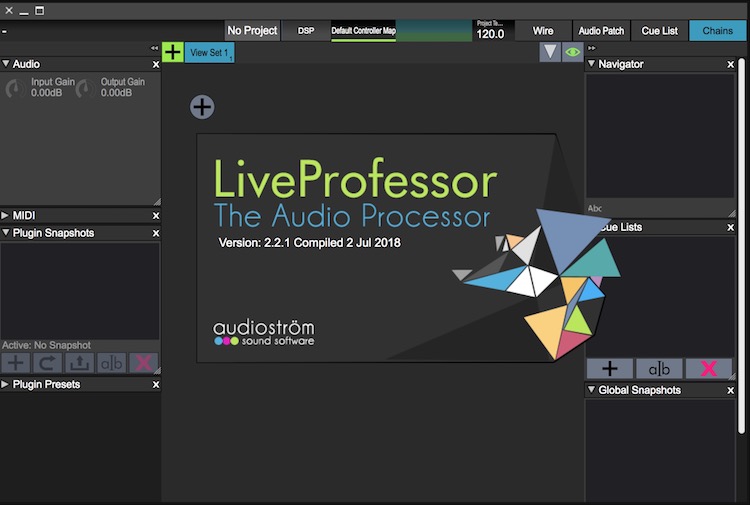

- #CLICKREPAIR FOR MAC HOW TO#
- #CLICKREPAIR FOR MAC DRIVERS#
- #CLICKREPAIR FOR MAC ANDROID#
- #CLICKREPAIR FOR MAC SOFTWARE#
- #CLICKREPAIR FOR MAC BLUETOOTH#
It isn’t always easy to diagnose a problem with your Mac disk, be it an HDD or an SSD.
#CLICKREPAIR FOR MAC HOW TO#
In this guide, we’ll show you how to use Disk Utility to run First Aid and repair any disks connected to your Mac. Luckily, Apple includes a handy tool you can use to repair your Mac: Disk Utility. If you are still having trouble with your interface after changing the above settings, please Contact Technical Support.You might need to repair your Mac disk if your computer won’t start up, apps keep freezing, you can’t open certain documents, or the performance has slowed to a halt.
In Apple Menu > System Preferences > Security & Privacy > Firewall make sure Firewall is Off. #CLICKREPAIR FOR MAC BLUETOOTH#
If you do not have a Bluetooth keyboard and mouse turn off Bluetooth while recording. Please ensure that Airport mode is turned off while recording. Norton Anti-virus) please turn it off while recording. #CLICKREPAIR FOR MAC SOFTWARE#
If you have anti virus software installed (e.g.Please Note: In some versions of MacOS "Repair Disk Permissions" is called "First Aid".Īfter you have completed these steps, please restart your computer. Select your main drive and click 'Repair Disk Permissions'.If you are using a laptop running macOS Big Sur will need to follow the below steps: Ensure that "Put hard disks to sleep when possible" is NOT checked.Set 'Turn display off after:' to Never.Select the 'Login Items' tab and remove any startup items.If you are using a Thunderbolt Network adapter and Thunderbolt Audio Interface please try to keep them on separate busses. If you have a Thunderbolt Interface remove all Thunderbolt items unless you specifically use them for Networking, such as a Thunderbolt Ethernet adapter.

#CLICKREPAIR FOR MAC ANDROID#
If you have a Scarlett or other USB Interface make sure to remove any USB connected items, such as BlueTooth PAN, BlueTooth DUN, Android or iPhone connections, etc, as these devices are often internally connected to your USB Bus. If you have a Saffire or Clarett Thunderbolt Interface make sure to remove any Firewire, Thunderbolt, Thunderbolt Bridge or Thunderbolt Firewire listings. Having ports you use for audio set to also be used for Networking can eat up their bandwidth which is needed for smooth audio streaming. In Apple Menu > System Preferences > Network and make sure to remove any Network Adapters you are not currently using for Internet or LAN connections. Please Note: Only Saffire, Clarett Thunderbolt and Red interfaces require drivers. You can find the latest version for your device on our Downloads Page. #CLICKREPAIR FOR MAC DRIVERS#
If your interface utilises drivers or control software, please ensure that you have the latest version(s) installed. This will free up your computers CPU, allowing your system to allocate more resources to your DAW.
Music streaming apps (Spotify, Music etc.). When you run your DAW (Digital Audio Workstation), make sure you close applications that are not in use, such as Therefore, it is recommended that your interface is connected directly to its own USB port. These issues can include noise, disconnections and even the interface not being detected at all. USB hubs are known to cause issues with audio devices. Ensure your interface has it's own dedicated USB port Using longer USB cables with your interface can cause dropouts, glitches or may not work entirely. Make sure you use a short USB cable, either the one that comes in the box or one that is shorter than 2 metres. Use a suitable USB cable for your Hardware If you are running large projects involving sample libraries and multiple plugins. at least 8GB of RAM is recommended. Please note, if you are not sure what a particular file does, removing it without prior research is not recommended. If you are no longer using any files in this list, you can remove them. Select the Manage > Review Files to see which files are taking up the most space. This window shows you how much free space is left on your main drive and other connected drives. Open the Apple menu by clicking the Apple Logo in the top left corner of the screen. To see how much space is left on your drive: Always make sure you leave at least 20% of your computer's main drive empty. Free up spaceĭon’t let your computer’s main drive get too full. Please Note: If you do not feel comfortable with the below steps, please contact an Apple specialist for further assistance. A delay between when you play your instrument/microphone/MIDI instrument and hearing the sound from your speakers/headphones. Pops, clicks, humming and distorted sounds when you record or play back audio. You might view this article if you experience these problems: This article contains some ways that you can improve your music production experience if you are using a Mac computer.






 0 kommentar(er)
0 kommentar(er)
